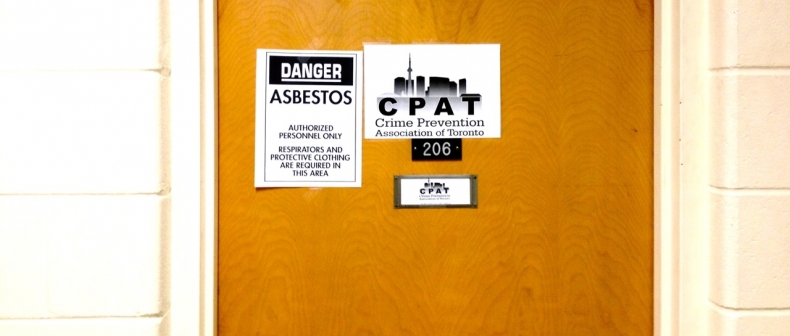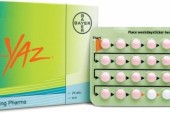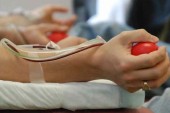
Toronto District School Board (TDSB) has been withholding potentially vital health hazard information from one of their tenants for the past four years, Toronto Standard has learned. After reviewing a leaked document that revealed a presence of Chrysotile asbestos in the vinyl floor tiles at 17 Fairmeadow Avenue, Janet Sherbanowski has now been forced to seek a new place to work.
In late August 2012, Sherbanowski, the Executive Director of Crime Prevention Association of Toronto (CPAT), ripped up the carpeting in the office she leases from TDSB to accommodate a young woman with cerebral palsy who — it was deemed by an employment agency — would not be able to walk properly on the carpet for her placement with CPAT. Over the course of two weeks, the aging carpet was pulled up and thrown away leaving the floor tiles exposed. On November 27, Sherbanowski got her hands on a 2008 lab report from an anonymous source. The report revealed that the floor tiles from her office had been tested by TDSB and showed it contained asbestos. For more than four months CPAT staff and volunteers worked inside that environment in a room where ventilation is poor and the atmosphere is stuffy.
On December 3, Sherbanowski wrote a letter to TDSB’s Occupational Health and Safety department (a mere 20 steps away from CPAT’s room) advising them of the hazardous conditions. The office, containing three fulltime staff and six Humber College work placement students, evacuated the premises on Dec.4 and are all currently working from home. Two days ago, the caretaker of the building advised Sherbanowski that a team of workers donning hazmat suits would be coming in over the Christmas break to inspect and perhaps clean up some of the loose floor tiles.
“Our workers and volunteers will not be working in the office until we receive an all clear that the environment is not contaminated,” Sherbanowski said. “They are scared they may have been exposed to the asbestos.” Sherbanowski says she will be clearing out her office and will now seek legal advice. “This is a duty of care issue. We were never told there was asbestos in the flooring,” she said. “Had we known that information, we’d never have ripped up the carpet in the first place.”
Sherbanowski received a letter dated December 4 from the Toronto Lands Corporation, a property manager and a subsidiary of TDSB. It stated CPAT had breached their terms of the lease agreement (under section 7.7) by not advising them in writing when CPAT ripped up the carpet in August. The letter went on to say, “the situation is most regrettable but it is due entirely to the unilateral actions of CPAT and its failure to comply with the lease.” The board noted that if CPAT required an air quality test for the rental premises this can be arranged by them, however the cost of the test must be paid for by CPAT in advance. In addition, all costs to replace the loose or broken tiles in the rental premises are for CPAT’s account and must be paid for in advance. There was no mention of why CPAT was not informed by TDSB upon discovering the suspected presence of asbestos in the office. There has been no correspondence to advise CPAT of the possible dangers posed to staff. Sherbanowski went to the trouble of placing her own sign that read “Danger. Asbestos: Authorized Personnel Only” on the front door of room 206, so that while she is away working from home, other staff don’t enter the room.
Above: Janet Sherbanowski in the office she leases from TDSB. Below: Chipped tiles “presumed” to contain traces of asbestos
When the CPAT signed the lease in 1995, they took the property on an “as-is” agreement. At that time, there were no signs of asbestos and the Toronto District School Board had no knowledge it existed as far as documents show. But, as Toronto Standard has learned, after viewing multiple reports and labs tests conducted by TDSB, during the last few years, the board did have knowledge there were signs asbestos existed in the room where CPAT operates and for whatever reason withheld that information.
The only official TDSB response has made came via email: “At this time we are working with the tenant to resolve this issue and will be communicating directly with them on the matter.” It’s the latest development that has hit TDSB in what can only be described as a tumultuous period for the Toronto board. In recent weeks they’ve come under fire for overspending on maintenance work, teacher strikes, dealing with the reality of possible school closures and staff cuts.
The 2008 report by Golder Associates, carried out on behalf of TDSB, looked to identify asbestos materials that pose as a hazardous health risk and required monitoring in accordance with the Asbestos Management Program (any persons initiating work within the board facilities must read and become familiar with AMP and sign the “record of acknowledgement” form). A total of 26 samples were obtained of materials suspected of containing asbestos from the site for analysis, in a room by room search. What the report showed was asbestos was “presumed” to be present in the vinyl floor tiles and the interior window caulking in room 206. The details of this survey were not relayed back to any members of CPAT.
In the Golder Associates report, they found estimates of asbestos between 0.5 to 5.0 per cent in the vinyl flooring. They also recommended a more comprehensive and invasive survey be conducted prior to any planned demolition or renovations and “if encountered during future renovations, suspect material should be treated as asbestos-containing until proven otherwise.” On July 13 2011, TDSB hired Environmental Consulting and Occupational Health (ECOH) to conduct a re-assessment of “the asbestos-containing materials in their facilities in Toronto.” Documents associated with this request clearly name 17 Fairmeadow as the location. The detailed final report for the reassessment is scheduled for delivery this month.
According to the World Health Organization, no safe level can be proposed for asbestos because a threshold is not known to exist (i.e. the greater the exposure, the greater the risk of developing a lung disease). According to Canada’s occupational health and safety regulations (amended in September 2011), an employee shall be kept from exposure to a concentration of airborne Chrysotile asbestos in excess of one fibre per cubic centimetre. Under Regulation 278/05, the provincial health standards for asbestos exposure indicate, buildings containing (or likely to contain) materials with 0.5 per cent or more asbestos by dry weight are subject to strict controls — both for employees and occupants of the building.
On September 14, 2012, the federal government announced they would ban the use of Chrysotile asbestos as a hazardous substance; Quebec said they would no longer support the asbestos and banned the mining of the substance. Canada was only one of five countries in the world to not have banned the substance, but have since joined international ranks to halt its exportation. The risks are greatest for workers in industries which produce asbestos, such as mining and milling, but can also impact workers who work near or close to the potent airborne materials. In 2004, an Ontario appeals panel concluded the workplace exposure while working as a custodian was a significant contribution to the workers development of mesothelioma. The appeal was allowed. A 2005 revision of TDSB’s Asbestos Management Program states the board will ensure all staff is trained as required by the Occupational Health and Safety Act, including caretaking staff of any property.
In a conversation with one of the day-time caretakers of the Fairmeadow building, in reference to asbestos, Sherbanowski said she was told that “you have to live and breathe asbestos for thirty years to get any type of lung disease.” Today and possibly over the weekend, Sherbanowski will finish transferring office furniture, computers and documents to her home until her Fairmeadow office has been gutted and cleared of any asbestos materials. The 62-year-old is not sure what lies around the corner, but she expects a court case of some sort to appear in the near future as she intends to sue either TDSB or the caretaker of the building.
UPDATE December 13, 2012: Toronto Standard has received responses from the Toronto District School Board and the Ministry of Labour. TDSB says there is “no risk” to CPAT after conducting an air quality test. Sherbanowski says TDSB has been “cavalier” about the potential hazard and wants this case documented by the Workplace Safety and Insurance Board. Read the update here.
____
Justin Robertson is a freelance journalist from Toronto. His work has appeared in The Walrus, National Post and Toronto Standard. Follow Justin on Twitter @justinjourno
For more, follow us on Twitter @TorontoStandard and subscribe to our newsletter.














